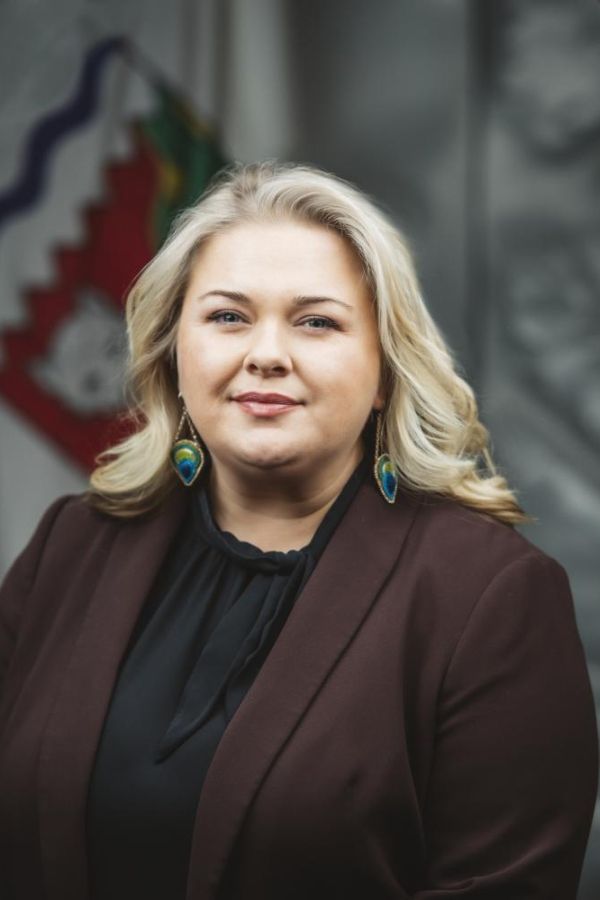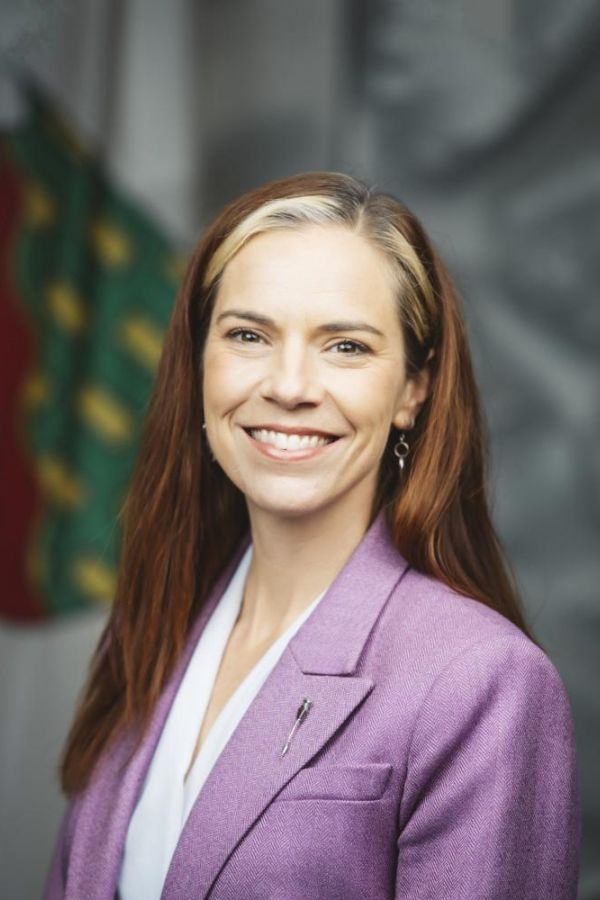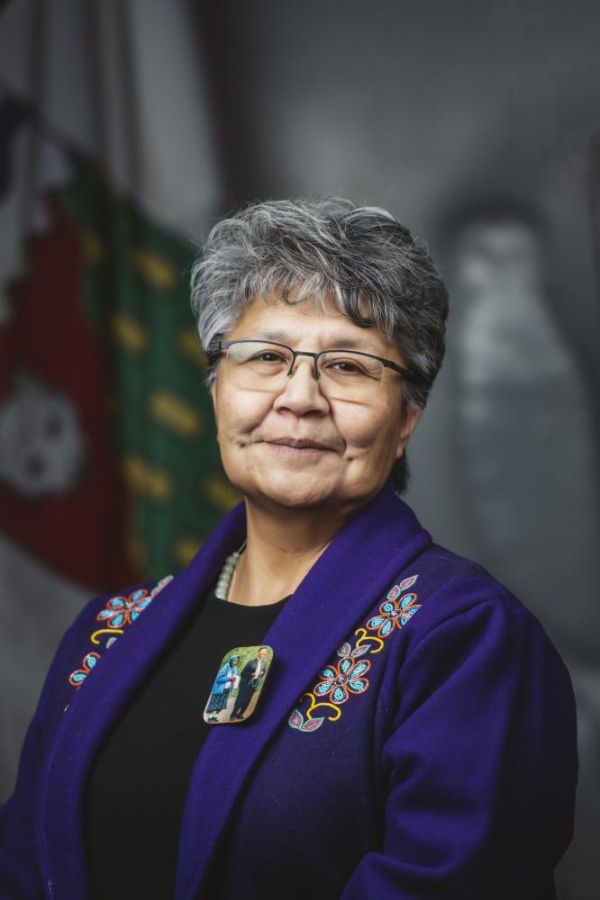
Yeah, thanks, Madam Chair. I think I can feel a Member's statement coming on. But I don't think we're going to get another chance at it, and I think that's probably not good because there was very serious concerns raised with it. And we'll just have to wait and see, but the Minister knows that if I'm not happy, I'm going to get up and talk about it in the House. So not much more I can do right now. Thanks, Madam Chair.

Thank you. Any further questions? Mr. O'Reilly.

Sorry, thanks, Madam Chair. I wasn't clear; my apologies. I don't have anything further on this first activity. Thank you.

Thank you. Member for Thebacha.

Thank you, Madam Chair. When two departments come together, you expect some reorganization and no duplicates. I just wonder what the criteria was for this amalgamation of these two departments, and I wonder if there's not and they've added one position already. So there's no there's more duplicates, okay. Usually when you amalgamate something, it's for lesser costs. And we're not seeing that in this whole transaction. I could see it if it was giving more positions to the regional centres and small communities, but I can't justify to build an empire here again in headquarters. I just want to know the rationale behind this whole transaction, and I'd like to hear what the Minister has to say on that. Thank you, Madam Chair.

Thank you. Minister.

Thank you. So when we first started doing this process, we said it's not a cost saving measure. We will amalgamate it, it's A plus B, as the deputy minister said. But then we're going through the process of optimization. So it's going to take us a bit of time to do the optimization. We don't want to, in the past, just cut. We're not just cutting to cut. We're trying to make sure that we do it right moving forward. So that there is where we have our staff in place, having our conversations, where we need to see things and where we need to be able to put our programs and our staff. And that's what we're doing. So that was part of the optimization process. Thank you, Madam Chair.

Thank you. Member for Thebacha.

Madam Chair, for clarity, I never mentioned cuts. If they're going to use the same budget and they're amalgamating, maybe some of those positions should have gone to the regional centres and even to some of the smaller communities. That's what I said. You know, I just I have a real problem especially with the because we don't have an actual chart in here but I'm just wondering so you have a deputy minister and then senior management. How many assistant deputy ministers are scheduled for this department? Thank you, Madam Chair.

Thank you. Minister.

Thank you. So the work chart's on page 70, and my understanding is we will have five deputy ministers. But for clarity, I'll turn to the or sorry, not deputy ministers, assistant deputy ministers, sorry. Five assistant deputy ministers. But for clarity, I'll turn to the deputy minister. Thank you.

Thank you. Deputy minister.
Thank you, Madam Chair. So there are four assistant deputy ministers between ENR and Lands at this time. There is one new assistant deputy minister position for operations that will be a regional position that is it is envisioned as an Indigenous pathing position to support Indigenous people to getting into senior management in the new department. So that's the new assistant deputy minister position that we're looking at.
With respect to the positions the change in positions that folks are seeing, there was a sunset of eight positions related to section 11 agreement and the nature fund agreement. And there was forced growth for ten new positions, all of them regional related to forest fire.
So as folks are aware, our fire season went until October this year, which is far longer than normal, and we're seeing more fires in some of the areas of the Northwest Territories than we've ever seen before. So we were able to access forced growth funding as a department to support firefighting personnel in several communities, a wildfire training position in Fort Smith, and a fire technician position in Lutselk'e. And all of those positions are regional positions. That's why you're seeing the difference in positions.
With respect to those duplicate positions, those will be addressed through the optimization process that we're dealing with, and we will make as I mentioned, we're expecting that there will be less than ten folks that are affected that are unionized employees. So that will be dealt with through the optimization phase that we're currently working towards. Thank you, Madam Chair.

Thank you. Member for Thebacha.

Madam Chair, I'm just concerned I guess about the regional office in Fort Smith, especially the ENR office. I want to ensure that affirmative action is followed and, you know, we have someone that is born and raised in Fort Smith, educated there, and I just want to ensure that all those things come into play when the time comes. And I'd like to know how I'm sure that everybody feels that way, even with the Inuvik region, with the other regional offices in the territory. And I just want to see how the Minister feels about that. Thank you, Madam Chair.

Thank you. Minister.

We will be following the affirmative action policy, the HR policy, so I can guarantee you we will be following HR as the Member quite eloquently suggested. Thank you.

Thank you. Member for Thebacha.

No questions, Madam Chair.

Are there any further questions under corporate management?
Seeing none, please turn to page 79. Environment and Climate Change, corporate management, operations expenditure summary, 20232024 Main Estimates, $11,789,000. Does committee agree?
Agreed.

Thank you. I'll now go to environmental management monitoring and climate change, beginning on page 83 with information items on page 84 and 85. Questions. Member for Nunakput.

Thank you, Madam Chair. No, just in regards to climate change and monitoring on the river from what's happening in Alberta, we always worry about it because we used to have a lot more check stations in regards to water stations along the Mackenzie River coming all the way down to Tuk. What's the status of those, and how many do we have active? Thank you, Madam Chair.

Thank you. Minister.

For that detail, I'll turn to the deputy minister. Thank you.

Thank you. Deputy minister Kelly.
Thank you, Madam Chair. We conduct regular monitoring at approximately 80 sites. Of these, 40 sites are part of the Northwest Territories communitybased monitoring program near 21 communities, and there's also sampling of transboundary waterways on the Slave, Hay, Liard, and Peel Rivers. There are 38 sites for the communitybased monitoring network. There's 26 sites for our North Slave water quality network. And the South Slave water quality network, there's ten sites. And then the transboundary river network one, there's four sites.
We also, through our transboundary agreement, have access to monitoring information that Environment Canada collects and that is collected by Alberta Environment and Parks, and we're able to access that as an early warning system for information coming towards the Northwest Territories on water quality. Thank you, Madam Chair.

Thank you. Member for Nunakput.

Thank you, Madam Chair. Water quality down and saying some from spring I guess, until October on the river, how many times are those sites checked in regards to water testing on that river? Thank you, Madam Chair.

Thank you. Minister.

For that detail, I'll turn to the deputy minister. Thank you.

Thank you. Deputy minister.
Thank you, Madam Chair. Many of the water quality stations that the GNWT supports are not done in the wintertime but the ones that the federal government does are. And the only time that they're not sampled is when the ice is not safe for folks to go on. The GNWT, in situations where there are concerns about water quality, will work with communities. For example, what's happening in Fort Smith right now, where we're using the drinking water and to take additional sampling under ice, but there are challenges with ice safety. So in the late spring and in the fall before the ice is safe is the only time that those federal stations are not monitored to my understandings. Thank you, Madam Chair.

Thank you. Member for Nunakput.

Thank you. Thank you, Madam Chair. In regards to the Mackenzie River Basin board, is that like, the board on that where is everyone I guess board members or directors, where they're from and how they're selected? Thank you.

Thank you. Minister.

For that detail, I'll turn to the deputy minister.

Deputy minister.
Thank you, Madam Chair. So the Members of the Mackenzie River basin board, there's Indigenous members and government members from each of the governments that are within the Mackenzie River basin. So Yukon, Northwest Territories, BC, Alberta, and Saskatchewan, as well as the federal government. And then there's Indigenous representatives from those areas as well.
For the Northwest Territories, we have an Indigenous steering committee for the water stewardship strategy. They use criteria to select one of their members to participate on that board because then they come back, and they communicate with the Indigenous steering committee. And right now it's Leon Andrew of the Sahtu. Thank you, Madam Chair.

Thank you. Member for Nunakput.

Thank you, Madam Chair. In regards to that, Madam Chair, with the water strategy, I guess with the spill that we had in Alberta last week that from that Esso site, was there any I guess flags raised in regards of doing more water sampling and checking of the sites for coming up in the upcoming like if not now, like in the near future? Thank you, Madam Chair.

Thank you. Minister.

Yes, like I said in my Minister's statement, we are working with the Town of Fort Smith to increase the monitoring on that. And as well we're working with I think it's the Town of Fort Chipewyan and they've they're monitoring as well, and we're checking their data as well. Thank you, Madam Chair.

Thank you. Member for Nunakput.

Thank you, Madam Chair. That's all the questions I have right now. Thank you.

Member for Great Slave.

Thank you, Madam Chair. Madam Chair, some of my questions have been answered already. But I am going to come back to, unfortunately, the ADM conversation and more so in a different manner, not so much whether you need five. But I look at some of the distribution of the percentage of funding or amounts of work that seem to be within the department under the different ADM streams proposed, and I'm wondering some look very heavy. Like, one is 48 percent of your budget is the wildlife and forest management, and then others are only like 6 percent. So I'm just wondering about the workload distribution for these ADMs. I get that for now some of the really technical stuff is probably still staying lumped together, for lack of a better word, but I'm just wondering has I know this will be part of the optimization but are we overburdening, say, the poor ADM of wildlife and forest management versus the one of corporate direction considering they have such different sizes of departments? Thank you or areas.

Thank you. Minister.

For that detail, I'll turn to the deputy minister. Thank you.

Thank you. Deputy minister.






